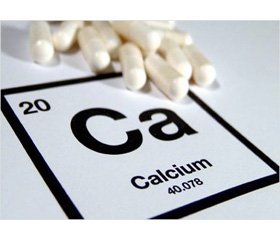Журнал «Здоровье ребенка» 6 (57) 2014
Вернуться к номеру
The calcium deficit correction algorithm in young children with food allergy manifestation
Авторы: Kryazhev A.V., Ovcharenko L.S., Vertegel A.A., Samohin I.V., Andrienko T.H., Zhikhareva N.V. - GU "Zaporozhye Medical Academy of Postgraduate Education, Ministry of Health of Ukraine", Department of Pediatrics and Neonatology with a course of outpatient pediatrics, Zaporozhye, Ukraine
Рубрики: Педиатрия/Неонатология
Разделы: Справочник специалиста
Версия для печати
Any allergic condition is considered as a systemic disease with involvement in the pathological process of many organs and systems, especially in young children. And no exception is food allergy (FA), the presence of which is involved in the pathological process of bone system.
Yes, it has been shown that children who are on hypoallergenic diet were recorded disturbance of bone mineralization, which are enhanced in combination with other factors: the lack of insolation and emotional stress. Feeding habits in children with allergies is that they have to adhere to a hypoallergenic diet with the exception of food, which also is not only strong allergens , but the most important sources of calcium (dairy products, fish, and other products).
Further, the presence of calcium deficiency results in osteopenia (abnormally low bone mass) and osteoporosis - the simultaneous loss of the organic matrix and minerals due to the low activity of osteoblasts.
Because of this importance is given to the study of the combination of two pathological conditions - allergic disease and mechanism of disorder of the bone metabolism. Given the high prevalence of allergic diseases, the study of metabolic processes, including in bone in children at these conditions is of great interest. And the establishment of reliable and informative markers of bone disorders in children with FA, their knowledge and use in therapeutic and diagnostic process will allow time to start etiopathogenetical therapy that will help improve the health of patients.
Purpose. Creative correction algorithm of calcium deficiency in children with food allergy manifestation.
Materials and Methods. Examined 150 children from 1 to 3 years age with FA and sensitization to cow's milk and observations in the two groups: 1) I group – children with displays of FA and by the laboratory signs of calcium deficit (n = 56); 2) II group – children with displays of FA without the laboratory signs of calcium deficit (n = 94). The level of total calcium, inorganic phosphorus and vitamin 25 (OH) D3 in serum were investigated.
Results. As a result of inspection 150 children with of FA was found decline of concentration of serum calcium in 56 children (37,3 %) (vibrations between indexes from 2,08 to 2,24 mmol/l). An analogical situation was marked in relation to the level of serum inorganic phosphorus in children of a 1 the group (vibrations between indexes from 1,42 to 1,54 mmol/l). At the analysis of maintenance of serum vitamin D3 it was discovered, that for the children of groups of supervision this index was within the limits of age-dependent norm (vibrations between indexes from 24,21 to 26,81 ng/ml). Developed algorithm of differentiated therapy and prophylactic measures, including localization, fixing of allergens (hypoallergic diet, sorbents), antiallergic therapy (antihistaminic preparations, inhibitor of degranulate of fat cages, local therapy), correcting therapy of violations of processes of osteogenesis. After the conducted correction, normalization of indexes of general calcium and inorganic phosphorus was marked in the serum for the children of the first group of supervision.
Conclusion.
1. In 37 % of children aged 1 to 3 years, against food allergies found lower total calcium in serum, indicating the presence of a contingent of the potential increased risk of violations of bone formation .
2. Deficiency in children with calcium registered varying degrees of reduction in total calcium in serum, which necessitates a differentiated preventive approach in each case.
3. Algorithm of differential treatment and prevention , including location, fixation and elimination prychynnoznachuschyh allergens (allergenic diet sorbents), anti-inflammatory therapy (antihistamines, mast cell degranulation inhibitor , topical therapy ), corrective therapy of bone disorders processes makes it possible to reduce the activity allergic inflammation and normalize the indicators characterizing the processes of bone formation in children with food allergies.
1. Pochkaylo A. S. Faktory riska narusheniy formirovaniya kostnoy tkani u detey s hronicheskoy allergicheskoy patologiey / A. S. Pochkaylo, V. F. Zhernosek // Meditsina. – 2009. – № 3 – S. 45–48.
2.Stennikova O.V., Sannikova N.E. Patofiziologicheskie i klinicheskie aspekty defitsita kaltsiya u detey. Printsipy ego profilaktiki.//Vopr. Sovr. pediatr.–2007. –T.6. – №4. – S.58–65.
3. Sicherer S. H. Food allergy / S. H. Sicherer // Mt. Sinai J. Med. – 2011. – Vol. 78 (5). – P. 683–696.
4. Prevalence and Progression of Osteoporosis in Patients With COPD. Results From TORCH [Elektronnyy resurs] / Ferguson G. T., Calverley P. M. A., Anderson J. A. [et al.] // Chest. – 2009. – Rezhimdostupa : doi: 10.1378 / ch est. 08-3016.
5. Suchasni pidhodi do likuvannya osteoporozu z urahuvannyam vidkrittya novih mehanizmiv yogo rozvitku: metod. rekomendatsiyi / Kovalenko V. M., Shuba N. M., Bortkevich O. P. [ta in.]. – K., 2009. – 31 s.
6. Ovcharenko L. S. Konstitutsionalnaya immunnaya i neyroendokrinnaya disregulyatsiya u detey kak ekvivalent metabolicheskogo sindroma detskogo vozrasta / L. S. Ovcharenko, A. A. Vertegel, T. G. Andrienko // Klinichna imunologiya. Alergologiya. Infektologiya. – 2008. – № 2. – S. 86–91.
7. Burbello A. T. Neblagopriyatnye pobochnye reaktsii lekarstvennyh sredstv : posobie dlya vrachey. – SPb, 2008. – 236 s.
8. Paliy I. G. Sovremennyy vzglyad na problemu enterosorbtsii: vybor optimalnogo preparata / I. G. Paliy, I. G. Reznichenko // Novosti meditsiny i farmatsii. – 2007. – № 11. – S. 217.
9. Makarova I. V. Novoe v lechenii i profilaktike pishchevoy allergii u detey / I. V. Makarova //Pediatriya. – 2008. – № 2 (pril. k zh. Consilium Medicum). – S. 2–7.

